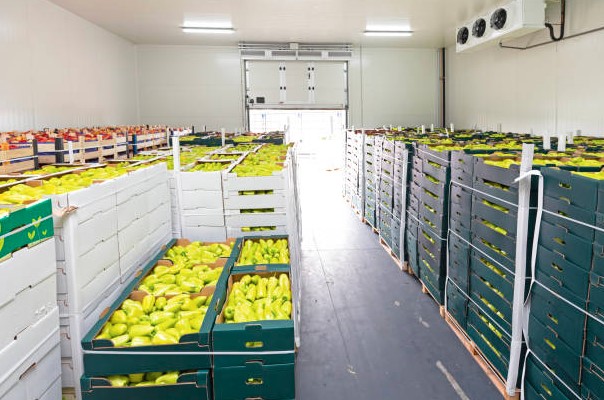Rooms
Click here to view a video that explains cold rooms.
Click here to view a video that explains the evaporator condensing unit.
In a cold storage room, the major factors influencing microbial growth are moisture and temperature. Psychrotrophic microorganisms, which can multiply at temperatures close to 0°C, usually require high humidity for growth. Puddles of water on floors and condensation on ceilings, walls or product surfaces should therefore be removed to reduce the risk of microbial growth. The temperature in cold storage rooms should be carefully monitored, preferably by an automatic recorder. Automatic alarm devices that react when the temperature exceeds a preset level are recommended. Evaporators of chill rooms also need to be cleaned and disinfected.
Through the accumulation of dirt and condensation, microorganisms can develop in the evaporators, and this can result in an important source of contamination (e.g., Listeria monocytogenes).

Frozen storage rooms should also be easy to clean and disinfect. To reduce temperature fluctuations in storage rooms, freezing of products should be performed in a separate freezer. This also permits more rapid freezing and hence quicker control of microbial growth.
Capacity
It is also important that the capacity of the cooling and heating apparatus is not exceeded, because then the temperature of the food can reach the optimum growth temperature of microorganisms. Examples are bringing big amounts of hot food in a chilled room or the heating of a big amount of chilled food on an electric cooking ring. In the first case, the heating will be too slow, so the pathogens or spoilage microorganisms can grow, in the second case, the temperature will not reach the limit above which no growth will occur.
Transport
The means of transport for chilled and frozen food must be equipped with a thermometer for registration.
Product Temperature
Besides measuring the temperature of the air, it is also necessary to measure the temperature of the product on a regular base. With this, one can prove that the cold chain is respected or that the products are heated enough or cooled rapidly to obtain microbiological safe foods. The results of these measurements need to be registered and kept.
Calibration
All apparatus that are used for temperature measurements need to be calibrated on a regular base. For this, a calibration scheme needs to be planned.